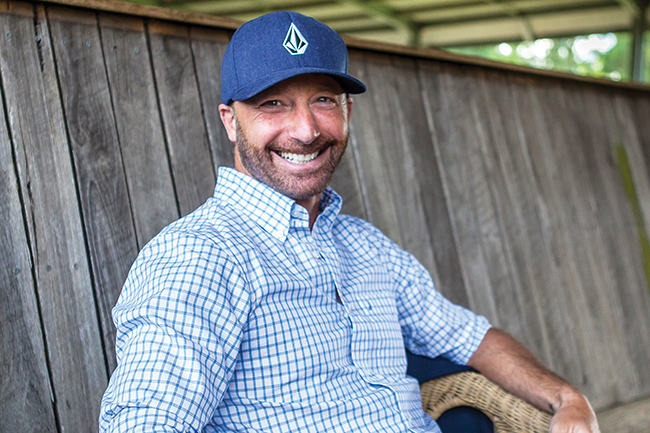
I was teasing one of my riders last weekend, asking her about the wording of the rules of a canter pirouette, which she didn’t know, but was showing PSG none-the-less. I gave her a hard time, but reassured her she is not alone in not having read them. I’ve said it before, and will say it again, how is it that someone competes in a sport, yet doesn’t read the rule book or guidelines that supposedly govern the sport they actively compete in? Sadly though, it isn’t just my amateur clinic clients and friends who are either not reading the rulebook and its guidelines, or not knowing them, it seems to be a lot of us.
If you look up the definition of “Equitation” in various dictionaries, you get more or less the same basic interpretation of the word as ‘the act or art of riding on horseback’. All of the definitions point to the ‘art’ of riding in some form and the act of being on a horse. We tend to think of equitation as something more relating to a hunter rider in an equitation class which is all about the rider’s position over and between fences, not so much a dressage rider, but if we understand it as applying the art of riding while on a horse’s back, clearly we can see we are a huge part of that picture any time we are on a horse.
I watched the World Cup a few weeks back and was horrified by one of the riders competing with total lack of regard for equitation in either form; understanding riding as an art, and as our own position and its inherent effect on the horses we ride. The rider’s legs were in the horses flanks and their spurs, at times, almost touching the horse’s hips at one point looking like her toes were above her knees, overall sitting crooked and seeming like bad circus riding. I feel like this rider also hasn’t read the FEI rulebook. Why is this rider allowed to ride at such a high level and not made to read the rulebook of a sport she is representing her country in, because if she had, she would see it clearly used to state:
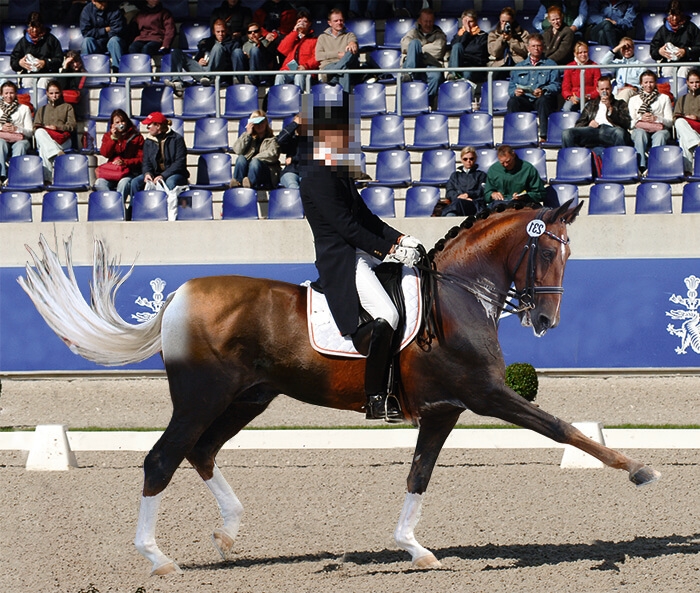
ARTICLE 418 THE POSITION AND AIDS OF THE ATHLETE
- All the movements should be obtained with imperceptible aids and without apparent effort of the Athlete. The Athlete should be well-balanced, elastic, sitting deep in the centre of the saddle, smoothly absorbing the movement of the Horse with the loins and hips, supple thighs with the legs steady and stretched well down. The heels should be the lowest point. The upper part of the body should be tall and supple. The contact should be independent from the Athlete’s seat. The hands should be carried steadily close together, with the thumb as the highest point and a straight line from the supple elbow through the hand to the Horse’s mouth. The elbows should be close to the body. All of these criteria enable the Athlete to follow the movements of the Horse smoothly and freely.
Sadly in the last year, in the FEI’s infinite wisdom, the portion of the rulebook that included the movements, the gaits and the riders position has now been removed and is only a “guideline”, with the rulebook primarily and only being rules on how to run, sanction, define and schedule a competition. The old rules have now become nothing more than guidelines. I guess that makes sense, why have a rule that states a canter is a 3 beat gait, I guess that is too subjective for the untrained or even trained eye to see or understand and who are we to judge?
While I am on it actually, why define a trot as a two beat diagonal gait where in extensions, the hind legs and front legs have to match “The movement of the fore and hind legs should reach equally forward in the moment of extension” (per the FEI’s old rulebook). Are these now just guidelines because it isn’t actually a rule that a horse must have a 3 beat canter or that in extended trot the front legs should not be up by the horses ears, with the hind legs not matching their scope, or is no one actually judging these qualities any more, making the rules and rulebook passé.
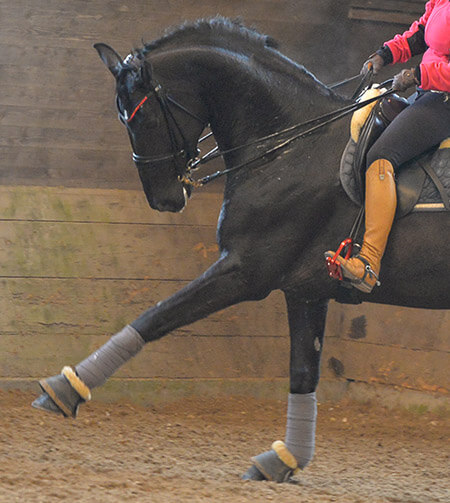
All mentions of the horses nose remaining in front of the vertical, or its poll the highest point in all movements is now just a guideline too, not a rule since the FEI has removed this statement from the rulebook as well; “In all the work, even at the halt, the Horse must be “on the bit”. A Horse is said to be “on the bit” when the neck is more or less raised and arched according to the stage of training and the extension or collection of the pace, accepting the bridle with a light and consistent soft submissive contact. The head should remain in a steady position, as a rule, slightly in front of the vertical, with a supple poll as the highest point of the neck, and no resistance should be offered to the Athlete.”
Why on earth are these now guidelines instead of rules as they used to be? Is it now just a guideline that no resistance should be offered to the athlete, basically saying, there is “no rule against resistance” only a guideline it shouldn’t be there? There is nothing in the rule book about actual dressage as a judged art form anymore, only about how to hold shows. Needless to say, I guess it pays off for this rider and others, who won’t be held accountable for ‘imperceptible aids the old rulebook used to refer to, as well as stating “the legs being steady and stretched well down. The heels should be the lowest point”. It saddens me greatly that the old rules are now just guidelines and those guidelines are honestly not easy to find on the FEI’s website. It seems to me they are turning the post-Glamourdale days of dressage rules into more soundbites of hints and subjective ideas than actual concrete structure to follow.
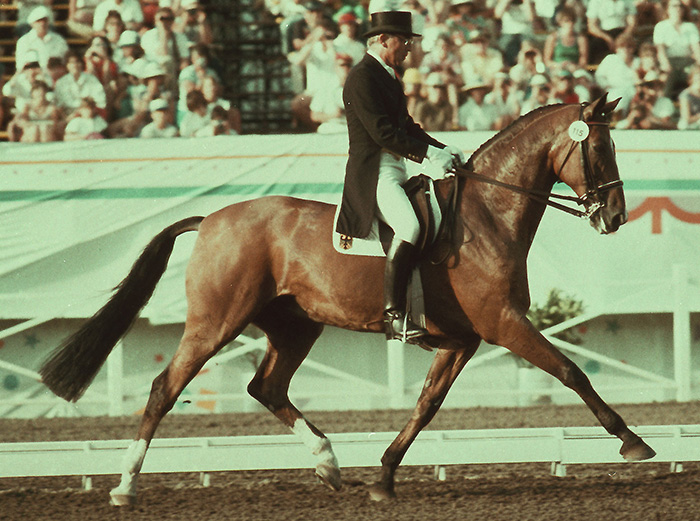
I was really saddened to see this and can’t help but wonder why this change. Those rules have been in place for decades now, being modified slightly as needed, when needed, but never completely erased. I’m not a believer in ‘just because it’s old, it’s right’ or ‘because we’ve been doing it this way for a long time, we aren’t changing now’, I don’t think every black and white photo of a dressage horse is a good one and won’t argue that there were plenty of horses above the bit in the good old days, but in this case there was nothing wrong with the rulebook, only in the lack of adherence to it.
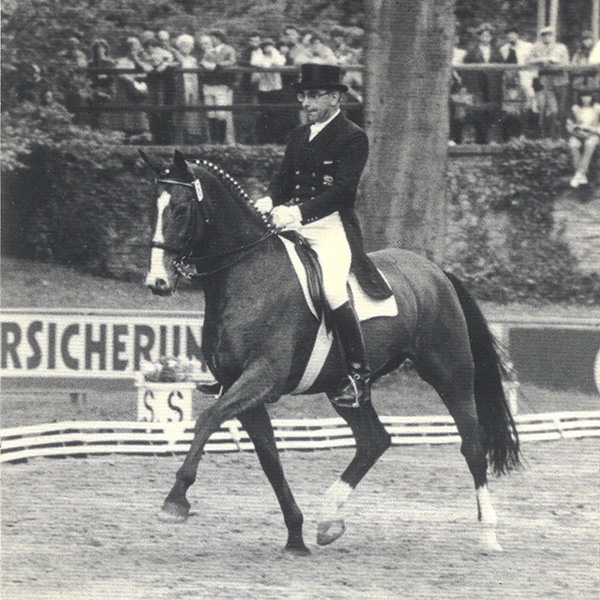
Is a good position or correct equitation something that we can argue is subjective, when, by definition, a good position is an agreed on thing? (Ear, shoulder, hip and heel aligned, with the heels down; the elbow, hand and bit all in one continuous line, with the hands upright and carried just above the horse’s wither about a horse’s mouth width apart; a supple seat which is independent of the riders other aids.)
Even in the old FEI rulebook there is reference to the arm alignment and hand position, “the hands should be carried steadily close together, with the thumb as the highest point and a straight line from the supple elbow through the hand to the Horse’s mouth”.
I saw something on Facebook the other day showing the heel, hip and shoulder alignment that we all either know or need to know as, and is, a fact of a well sitting rider. This illustration and visual “soundbite” however was wrong and kept being passed around like another one of those soundbites that people start repeating but don’t investigate the source of, being forwarded to me as both a good and bad example of what is correct.
Indulge me for a moment, and take for instance Gustav Steinbrecht, who is one of the ‘founding fathers’ of German dressage who wrote in his book ‘The Gymnasium of the Horse’, “ride your horse forward and set it straight”. That quote, or soundbite from his book, is often referred to as well as re-quoted in varying apparitions and is an obvious fundamental principle of dressage riding as a whole. Everyone seems to repeat it, not always knowing its context or history. Luckily, this one is a principle and soundbite that not only the Germans quote and live by, but also the French to a degree “calme, en avant, droit” (Calm, Forward, Straight) as well as riders of the Spanish Riding School; from Podhajsky’s ‘Complete Training of Horse and Rider’, “Straighten your horse and ride him forward”.
It is a soundbite that transcends borders as it’s a principle that makes sense and has been tried, tested and proven time and time again for decades in many shapes and forms. Sadly though, many people and friends refer to the exact Steinbrecht quote, but haven’t read the entire book, therefore often missing the historical significance and context it is from. We have a lot of these types of sound bites in our day-to-day work that we hear and live by, some well founded, others just repeated with no historical background or proof. One of my favorites I heard a few years ago was “3yr olds work 3 days/week, 4yr olds work 4 days/week and 5yr olds work 5 days/week”, which I’ve then continued to hear since then, re-quoted, but wondered where it came from, or who. I wonder if that quote came from a book I hadn’t read, which is very possible or was it just overheard from someone, and repeated since no one who says it to me can source that information or give me its historical use, other than they saw it on Facebook and it’s catchy.
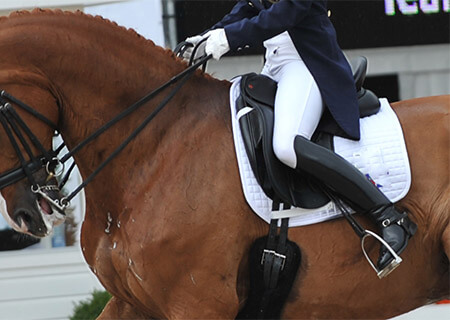
The ‘jab’ with the spur…
Steinbrecht was in fact a founding father of German Dressage, but that doesn’t mean all his quotes are ones to take to heart, or live by. Take this one for instance, “The ‘jab’ with the spur is the strongest and most emphatic influence with the spurs. It gives the horse a momentary, intense pain and, by injuring the skin, causes infection and swelling of the parts involved so that, for some time, the sensitivity at that point is even greater”…and goes on to say “Lazy horses, and those that are reluctant to use their power, are driven into lively action by a jab with the spurs; and any stubbornness, resistance, or mischievousness is punished with the spur. The rider must give the jab forcefully and decisively…” Basically saying if we mildly injure the horse with the spur, we can use that to our advantage in their added sensitivity.
Although I see the quote ‘ride your horse forward and set it straight’ on many German riding hall walls, I haven’t seen the one about how to use the jab of the spur. When taken out of context, any soundbite or quote can have many meanings, both good and bad, which can be applicable to the improvement or the detriment of any horse or training program. When not sourced or fact checked and historically validated, they can become skewed, misunderstood or misused.
The photo of the rider I saw on Facebook clearly had the rider sitting in a chair seat, but a straight line was none the less drawn from the shoulder joint, down just behind the riders actual hip joint, then on to the back of the riders heel or boot. The image clearly showed a rider who if removed from her horse in that position would have tipped over backwards since her ankles and heels were clearly in front of her center of mass. The heel/shoulder/hip alignment must align the joints of each major intersection, so the ankle, the hips socket and the shoulder socket are what need to be stacked on top of each other for the rider’s upper body to be balanced over their center of mass, with their feet underneath that same center of mass, so when removed from the horse in their current posture or stance, they would be able to stand upright without falling down. It was another time the soundbite gets used without the science or research to back it up and in this case an incorrect illustration, but then repeated and reposted over and over helping to change the landscape of the art form because of the ease of its media.
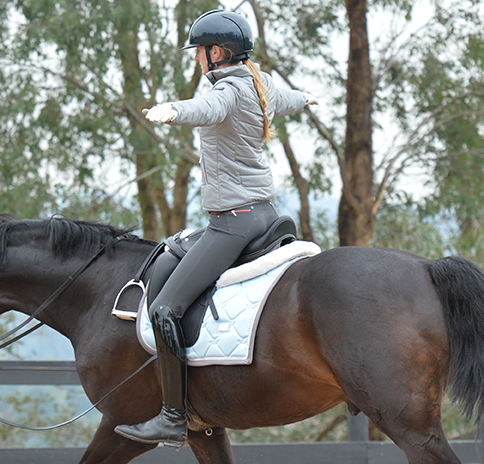
I would love to take the rider from the World Cup, put her on one of my horses and lunge her without stirrups, without reins, for as long as it takes till she can sit independently and straight enough to earn the right to again hold the reins and be set loose in the arena once again. Over and over I paused the video to see, if in fact, it was her horse’s tongue I saw out the side of her horse’s mouth and couldn’t help but think that her position had to play a significant role in the horses incorrect way of working as well as the obvious mouth issues.
Again I refer to the old FEI rule book or the new, now “guideline” in the definition of ‘on the bit’ which states, “and no resistance should be offered to the Athlete”. The lack of understanding the cause and effect of this rider’s position on her horse is appalling to say the least and there is definitely resistance that is due to poor equitation on more than one level. Does the trainer at home have these discussions with the rider and are the judges making note of the incorrect things that are so easily seen by the naked eye and by the layman which are inhibiting and distracting from the performance and art? Who is accountable for such poor equitation?
I’ve heard time-and-time again from people about various riders that they might not be a pretty rider, but they are an effective rider and this is, once again a soundbite that has no foundation in truth. I cannot disagree with the sentiment of that statement strongly enough, it is basically saying it doesn’t matter that your aids are obvious and loud if they work or produce the required movement. Why on earth would anyone claim to be a good communicator when all they do is yell… Being loud does not make you a good communicator, being succinct, well spoken and able to make your feelings, ideas or views known quietly in a straightforward manner does. Yelling at the horse with your aids does not make you effective, it does the exact opposite. If it is possible to convey an idea to a horse with invisible or as the FEI says, imperceptible aids, shouldn’t that be the goal, being an effective communicator? Why on earth do we allow riders to skate by on the ‘they are effective’ card when they are screaming at their dance partners? Is that just another sound bite that has been passed around and we all have been agreeing to without really studying the implications of?
I remember a clinic a few years back working on a rider’s position, and after a bit, what I said to her, probably seemed like endless challenge, she snapped back at me, and said to go easy, all she does is ride young horses and it is really hard to sit well on the novice unbalanced horse. Where-and-when did it become ok to ride young horses in a bad position, crookedness or lack of body control because it’s hard? It seems to me it would be the most important time to have those qualities in check, as the young horse is so susceptible to balance impurities of the rider, and will suffer because of them far more than our older more schooled horses will.
Our older horses will definitely struggle with an out-of-balance rider, but a young horse suffers when a rider’s position is poor. Is that being taught or allowed and I don’t know it, is it just something that I missed in my own education and the next soundbite I’m going to hear is that “it’s ok to sit poorly on young horses because it’s hard to sit well?” Is the understanding that equitation is not just about position, but about the art of how we affect the horses we sit on and the picture that creates, or do we believe these things to be separate, as in position is a different entity than its affect on beauty?
Is the FEI, and some of the larger powers of the sport, waging a kind of war of attrition on good equitation, where the paradigm is slowly shifting noticed only by a few? They keep taking away founding principles of the art form or at least downgrading them to either insignificant or non relevant until the general population believes the standard is still high, not realizing the standard has slowly been lowered further and further causing a sort of illness or death to good equitation that has taken place from within, noticed by some, but unnoticed by many.
On the TV show Ted Lasso, Jeremy Swift’s character ‘Higgins’ says, “one pilgrim alone is a zealot, two pilgrims together are a pilgrimage” and it was one of the best lines on television I have heard in years. A perfect soundbite so to speak. More and more I hear of less and less people, who are fewer and further between, who are willing to speak out on horsemanship, equitation, the art as a whole, and in the end sound more and more like fanatical and uncompromising zealots in pursuit of what they believe to be right, who fight alone against the attrition of the sport. I find it sad that it isn’t a pilgrimage more people want to be on.
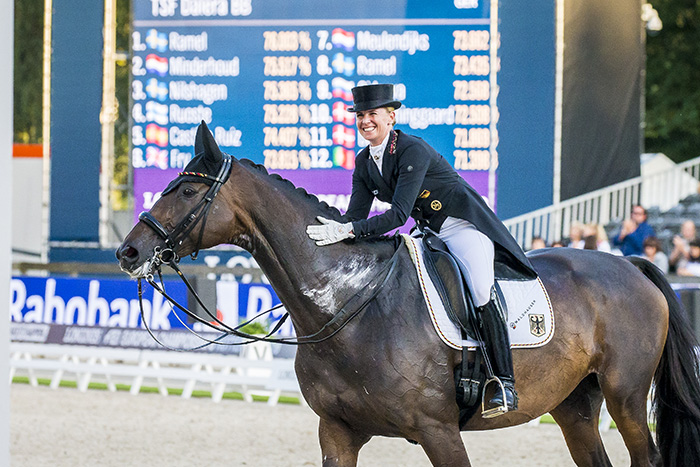
Dalera and Jessica von Bredow-Werndl – a journey of love…
Training dressage is an endeavor of love. It isn’t an easy undertaking and can often be frustrating. It’s a studied art, or at least I hope we can see it as an art and study it as a whole, not parse out segments we agree or disagree with or changes the framework and rules as we go to suit our individual needs. I said in my last column “All the methods have been tried and used, the experiments have been made, the hypothesis has either been proven or dismissed and now the art gets to begin”, which I believe with my entire heart. I asked a friend the other day, if tomorrow there were no more horse shows, would you still ride? I’ve asked that question at various times to various people over the years and am always curious as to what the answer will be.
If the shows stopped tomorrow, would the judges still have jobs in the industry since a clinic on how to improve your test wouldn’t be relevant any more, it would be totally antiquated. The trainers who could teach and ride, would still be needed by those who would still be riding, but would their instruction need to change? They would be riding to improve themselves, their horses and for the love of the art and the horse and in turn, better equitation as a whole, since they would then be riding to study art and to better themselves and their relationships with their horses instead of for a score. I find it to be an interesting mental exercise to do with people and myself from time-to-time to make sure our love for the craft, technique and mastery would still hold as true now as it hopefully always has.
Seeing as the rules have now become just guidelines, is it possible that eventually the guidelines become mere soundbites we use in our day-to-day training, not understanding their historic significance, lineage and background, lending themselves to the further and further weakening of the structure of the art only sometimes repeating them when they seem applicable, but not living by their rule of law and knowing why these standards are the lifeblood of the art? The guidelines and soundbites are only as valuable as our understanding of their ancestry and their inherent impact and significance on the craft. If you don’t know the body of knowledge and science behind why it is important your horses nose is in front of the vertical, does it become irrelevant and trivial with bothering to have it there? In this day and age are we becoming more soundbite followers and teachers than erudite creators and craftsman who know an equine sport and celebrity, but not an art?
Breeding a top dressage horse in Australia? Choose from the best bloodlines available in the world, go to www.ihb.com.au
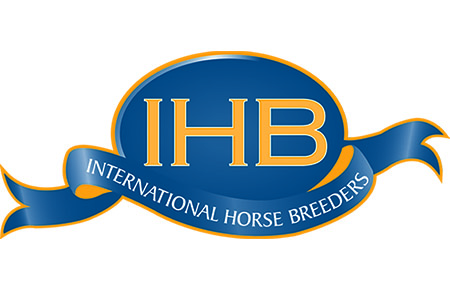

As a teacher, now for over 50 years, of the Classical Seat and refined aids, this article is balm for weary eyes. I agree with every single word. I can hardly watch competition dressage these days, and watching videos of lessons by qualified instructors who pay absolutely no attention to the rider, I despair. But the truth is, most of them do not seem to recognise faults in the rider, never becmind how to correct them. It is why I started my own ‘Enlightened Equitation’ teacher training because the official bodies here pay lip service to developing a good seat. It’s why I pioneered the teaching 25 years ago, with horse movement simulators to enable work to be done on the simulator with the instructor able to correct ‘hands on’ . Having seen Maestro Nuno Oliveira ride at the Horse of the Year Show when I was 13 years old, I knew this was how I wanted to ride. In my teens,I found a way to teach riders to sync with the horse’s movements to produce a quiet, elegant but effective seat, but I wasn’t allowed to use it in my BHS exam here. So I refused to take the exams, instead training with Continental classical trainers. I was told I would never succeed outside the BHS with no qualifications, but here I am, having taught on several continents, now nearly 71 and still going strong!
Thanks Jeremy, for highlighting the necessity for a deep seat that permits independence of the reins. Now off to share the article on my Facebook group ‘Equestrians. It’s Time to Act!’
The rules and principles has been compromised in order to accommodate the inadequacy of the important stake holders.
First and utmost the Judges .
Majority of riders (those that buy the title of GP riders)
All those with the snout in the trough making millions of $$$ from the modern travelling circus – dealers. trainers .breeders and big sponsors .
As long there is a winner and the show keeps going who cares .
Very very SAAAAAAAD.
Bravo! I too saw “that ride” at the world cup and was literally quite stunned. I was embarrassed for them, and then I was angry, angry at the entire system that has become some barely recognizable thing that is being called dressage. I stopped showing a long time ago, it is way more about the art, the partnership and the love of dressage for me. To see it twisted and contorted into what I can only describe as cruelty is heartbreaking. The positive news is that there are a LOT of students of dressage and horsemanship that want to do it right, you may never see them in the show ring but nonetheless there is a grassroots movement to guard the old ways, the correct ways, the art of dressage. Thank you for a great article and saying what has been way overdue even though we all know that many will never heed it.
Thanks Jeremy for this remarkable and thought provoking article. These were the rules I was taught and am still learning from various trainers when I started riding at 35. I’m now 71 and it’s refreshing to read this fine article you have written. Let’s hope riding dressage can once again be what was intended to be by great riders years ago.
Absolutely a fantastic read! Thank you .
Thank you for this Jeremy. On a different topic: I would appreciate your views and an authoritative, detailed article on working in specifically a dressage court with other riders, on teaching students accepted dressage court traffic rights of way and etiquette. As a flight instructor, people would be bumping into each other and falling out of the sky if I didn’t do this early in their training and ensure they understood and employed them. Imagine learning to drive and not knowing what side of the road to drive on, not knowing not to turn left in front of oncoming traffic, not to tailgate, etc. I see too many students who have not been educated and trainers who don’t employ them for one reason or another. IMHO, these instructors are doing their students no kindness by not enlightening them and compromising other riders work. My belief is that horses only have so many rides in them, and I’d prefer not to waste them.
Great article. Clearly the FEI have opened the door and set the path for all the cruelty and bad training , as can be seen in Grand Prix dressage with so many horses behind the vertical , round necks, no savouring of bits , hugely extravagant leg actions , etc etc etc !!
Unfortunately it’s all about ego and money and it’s the beautiful noble horse who suffers.
I hope you all keep up the good work to expose! and make changes ….
Thank You for spending your valuable time saying something that has been needed to say. That is why you are an excellent instructor, you have read between the lines.
I work primarily with 2nd level and below. Any of my students will tell you I am a position monster! I felt saddened by so much truth in your article. Too many trainers want microwave results, as do too many clients. I tell potential clients if they want it fast, go elsewhere. Winning is fine, but learning is the result you want.
Great article, thank you. We have been partnering with horses in many different ways for a very long time – why has it all gone so wrong within a couple of generations and, more importantly, how can we get back to training for the good of the horse? No wonder they are all breaking so young. Such a lot of stress on minds and bodies
So needs to be said and said again and again. We are losing the classical riding skills and not just in dressage either! But how can we expect different when the few schools that used to exist in the US have been long gone (Potomac and Meredith Manner, etc.). The question is how do we TRAIN riders to become instructors? Being a good instructor requires the aspects of being a good TEACHER! Not just a good rider. And while it helps to BE a good rider, if the skill is somewhat natural, that could very well work against you as an instructor, so finding a good instructor is MUCH more difficult than just searching for a good rider (or a winner in the show arena)! So many times I’ve watched “poor quality” instructors and their students are basically helpless because they do not have the exposure or knowledge to begin to analyse their instructor. They can only follow the instructor’s directions until an “event” brings them more information (horse becomes difficult or resistive or lethargic and stops performing as before), student gets injured, years and money have gone by without any advancement. Those the are the only sign posts for most novice/green/inexperienced riders and even those signs don’t always get diagnosed correctly! I’ve spent over 50 years in the equestrian business as a riding instructor, coach and clinician. The majority of my client’s skills ran from green/novice to second/third level. Every once in awhile I coached a world medalist. So when I say THE BASICS ARE ALL THE SAME, I know what I’m talking about. Thanks for your timely article.
I too saw that rider at the World Cup – it was unbelievable and everyone oohing and aching over her and her very talented horse. Pathetic. It seems that the show horse world – in almost all disciplines has become a parody for the destruction and collapse of civilizAtion across the board. Thank you for writing. I was a working student for Melle Van Bruggen in the ’80’s when he was at the Monterey Stallion Station, near Laguna Seca. I spent a year on the longe line!!! So good!!!
This article is food for the soul. in a world increasingly ruled by legal actions and interpretation The Rules are the only things standing up for the horsess being ridden and worked in a harmonious manner that develops and builds their body, mind and skills in a steady and harmonious progression. The Rules need reinforcing with additional clarification not dumbing down to mere guildlines. Good governance is all about specific measureable markers and well defined consequences. If the sport ruled itself correctly we would not need to have the Court of Public Opinion weigh in. Sadly those high profile episodes damage us all as we are all then tainted by having permitted it to happen in the first place. WE have to clean our own house! I have taught for years (studied under Marji Armstrong, Walter Zettl and Charles de Kunffy) that position matters and is all about clear and subtle communication AND making it as easy as possible for the horse to choose the correct response- not by force but by calm communication and a progression of exercises that each rider and horse benefit, learn and grow from. It’a a long road that those with show aspirations have a hard time following- especially when their level appropriate horses are judged so poorly compared to hollow, behind the bit, hind end dragging characatuers of dressage. it’s just too tempting to take a short cut with someone “in the ribbons”. So much of what we currently see in the show ring is a travesty and that can only be corrected by completely overhauling the judging and reinstating and reinforcing the rules of what is correct.
Excellent, thought provoking article.